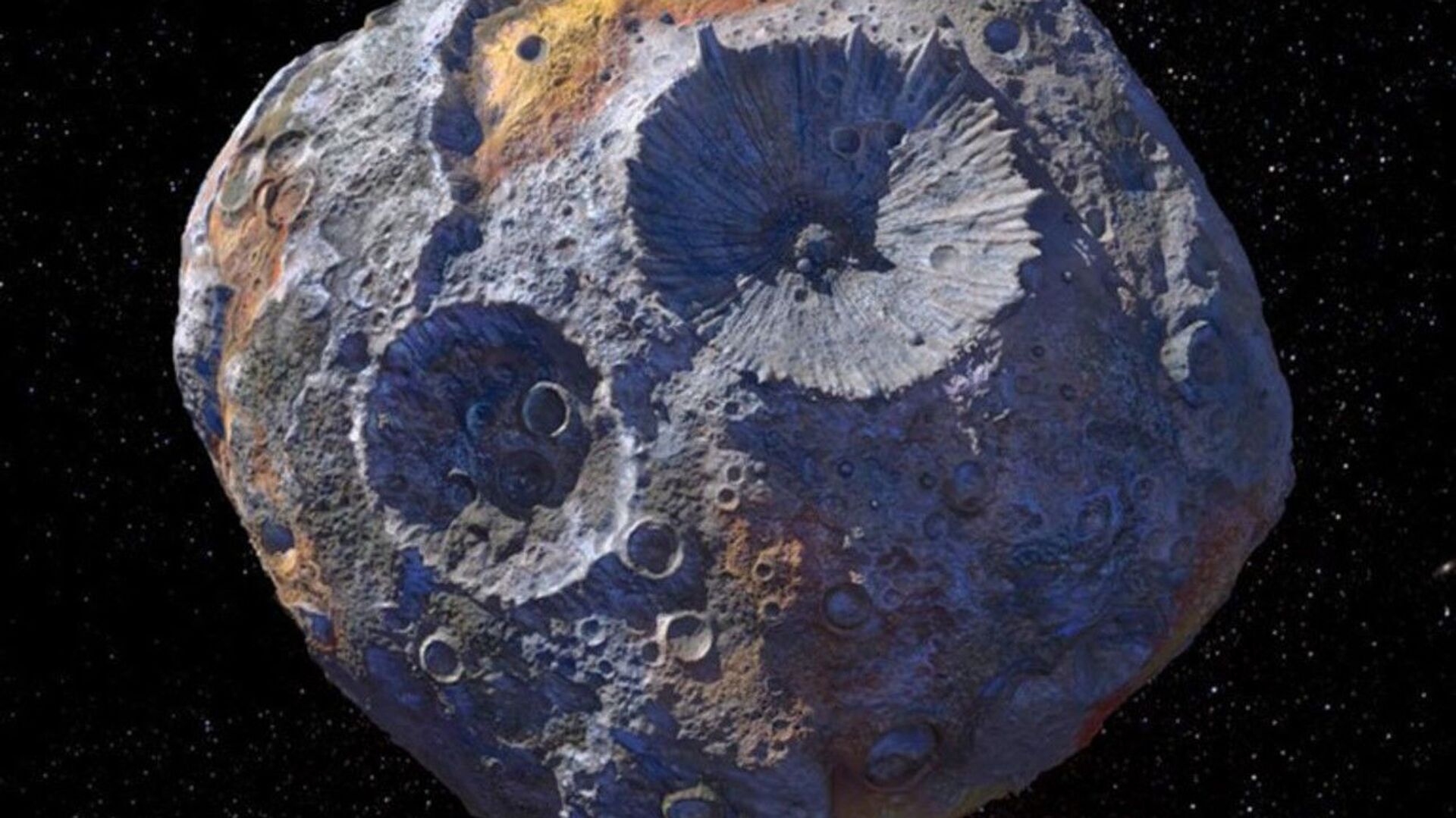https://sputnikglobe.com/20210807/new-study-may-help-solve-mystery-of-asteroid-that-can-make-every-earthling-a-billionaire-1083550335.html
New Study May Help Solve Mystery of Asteroid That Can Make Every Earthling a Billionaire
New Study May Help Solve Mystery of Asteroid That Can Make Every Earthling a Billionaire
Sputnik International
The celestial body was discovered by Italian astronomer Annibale de Gasparis in 1852. It was named after the Greek goddess of soul Psyche. Unlike most... 07.08.2021, Sputnik International
2021-08-07T13:43+0000
2021-08-07T13:43+0000
2023-06-20T17:12+0000
newsfeed
science & tech
society
nasa
asteroid
precious metals
space exploration
https://cdn1.img.sputnikglobe.com/img/07e4/0a/1e/1080933159_0:137:1293:864_1920x0_80_0_0_fe8fca66a4d76e6eae1d2e88cc6ed583.jpg
A group of scientists from the California Institute of Technology (Caltech) have created a temperature map, which they say may shed light on a mysterious asteroid known as 16 Psyche. The celestial body is made of so much precious metal that it is estimated it can make everyone on the Earth a billionaire.Professor Lindy Elkins-Tanton calculated that all of the metals in the celestial body would be worth $10,000 quadrillion. For comparison, last year, the world economy was worth $84 trillionOne of the biggest mysteries surrounding 16 Psyche is its origins. Some scientists believe the asteroid is part of a protoplanet formed during the early days of the Solar System. During those days planetary bodies coalesced and then collided with one another.The temperature map created by the Caltech scientists could help study the asteroid's surface properties – thermal inertia, how fast it heats up and cools down. The researchers have already found that the asteroid's surface is made up of at least 30 percent metal and that the rocks on its surface are covered with metal grains.This and other information discovered with the help of the temperature map will be important when NASA launches its mission to study 16 Psyche in 2022. The probe, equipped with a multispectral imager, a gamma ray and neutron spectrometer, a magnetometer, and a radio instrument, is expected to reach the celestial body in 2026.
Sputnik International
feedback@sputniknews.com
+74956456601
MIA „Rossiya Segodnya“
2021
News
en_EN
Sputnik International
feedback@sputniknews.com
+74956456601
MIA „Rossiya Segodnya“
Sputnik International
feedback@sputniknews.com
+74956456601
MIA „Rossiya Segodnya“
newsfeed, science & tech, society, nasa, asteroid, precious metals, space exploration
newsfeed, science & tech, society, nasa, asteroid, precious metals, space exploration
New Study May Help Solve Mystery of Asteroid That Can Make Every Earthling a Billionaire
13:43 GMT 07.08.2021 (Updated: 17:12 GMT 20.06.2023) The celestial body was discovered by Italian astronomer Annibale de Gasparis in 1852. It was named after the Greek goddess of soul Psyche. Unlike most asteroids, which are composed of rock, this one belongs to the M-type category and is composed of metal.
A group of scientists from the California Institute of Technology (Caltech) have created a temperature map, which they say may shed light on a mysterious
asteroid known as 16 Psyche. The celestial body is made of so much precious metal that it is estimated it can make everyone on the Earth a billionaire.
Professor Lindy Elkins-Tanton calculated that all of the metals in the celestial body would be worth $10,000 quadrillion. For comparison, last year, the world economy was worth $84 trillion
One of the biggest mysteries surrounding 16 Psyche is its origins. Some scientists believe the asteroid is part of a protoplanet formed during the early days of the Solar System. During those days planetary bodies coalesced and then collided with one another.
"We think that fragments of the cores, mantles, and crusts of these objects remain today in the form of asteroids. If that's true, it gives us our only real opportunity to directly study the cores of planet-like objects", said Caltech's Katherine de Kleer, an assistant professor of planetary science and astronomy.
The temperature map created by the Caltech scientists could help study the asteroid's surface properties – thermal inertia, how fast it heats up and cools down. The researchers have already found that the asteroid's surface is made up of at least 30 percent metal and that the rocks on its surface are covered with metal grains.
This and other information discovered with the help of the temperature map will be important when
NASA launches its mission to study 16 Psyche in 2022. The probe, equipped with a multispectral imager, a gamma ray and neutron spectrometer, a magnetometer, and a radio instrument, is expected to reach the celestial body in 2026.

